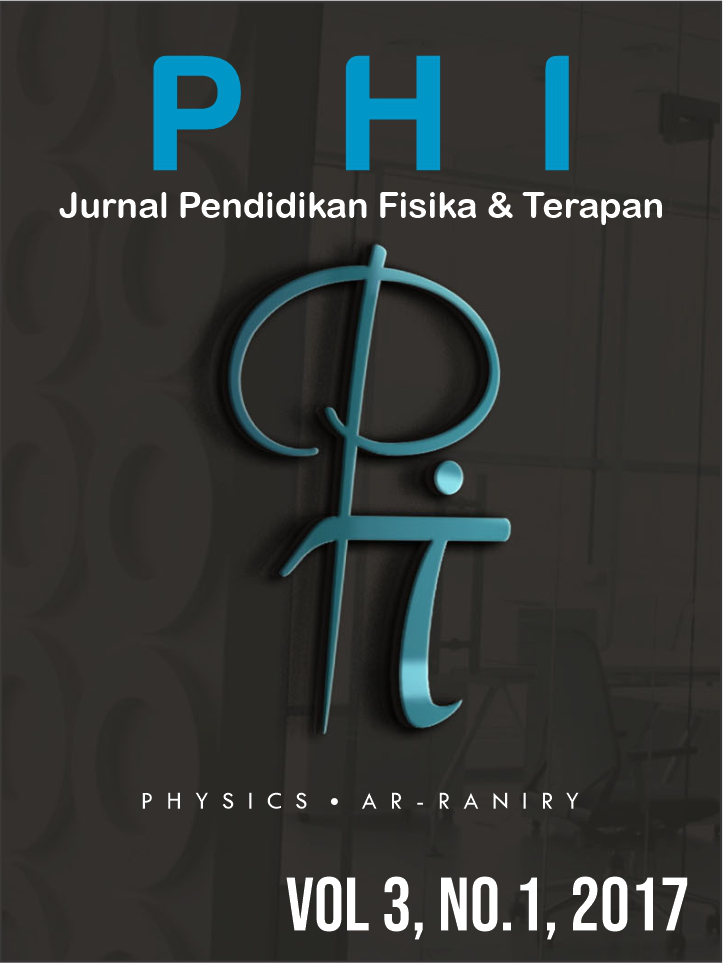Aplikasi Color Analysis untuk Memprediksi Kepekatan Minuman Kopi Tubruk
DOI:
https://doi.org/10.22373/p-jpft.v3i1.7448Abstract
Penelitian ini bertujuan untuk mengetahui presentase kepekatan warna dari hasil foto minuman kopi tubruk. Gambar/foto masing-masing minuman kopi telah diperoleh pada penelitian sebelumnya. Penelitian dilakukan dengan cara eksperimen. Setelah melakukan studi pustaka, peneliti kemudian menginstal aplikasi analisis warna yang ada di android. Aplikasi analisis warna yang digunakan yaitu Color Analisys. Selanjutnya, foto tersebut dimasukkan ke dalam aplikasi Color Analisys dan dibaca nilai presentase warna masing-masing. Hasil yang diperoleh menunjukkan bahwa minuman kopi yang dibuat dengan kopi tubruk diameter antara 3-5 mm memiliki kepekatan 95.10%, dan kopi tubruk diameter antara 5-8 mm memiliki kepekatan 94.36%. Dapat disimpulkan bahwa warna kopi yang paling hitam terdapat pada kopi tubruk halus.References
Nugroho, Sarwo. 2015. Manajemen Warna dan Desain. Yogyakarta: Andi.
Ilja Zegars, Color Measurement Using Mobile Phone Camera, Helsinki Metropolia University of Applied Sciences, Bachelor
of Engineering, Information Technology, Bachelor’s Thesis, 5 May 2013.
R. D. Kusumanto, Alan Novi Tompunu, dan Wahyu Setyo Pambudi. Klasifikasi Warna Menggunakan Pengolahan Model
Warna HSV. JURNAL ILMIAH ELITE ELEKTRO, VOL. 2, NO. 2, SEPTEMBER 2011: 83-87. Teori WARNA
Yuxiang Wen, Dengfeng Kuang, Jinhui Huang and Yi Zhang, Open Access Article. Published on 01 September 2017.
Downloaded on 01/09/2017 15:50:52. This article is licensed under a Creative Commons Attribution 3.0 Unported
Licence.
Albert Munsell, 12 september 2017, https://kupdf.com/download/teo ri-warna-albert munsell_59b74fa308bbc5e450ffdeba
_pdf, diunduh pada tanggal 7 Januari 2018.
Downloads
Published
Issue
Section
License
Authors who publish with Jurnal Phi agree to the following terms:
- Authors retain copyright and grant the journal right of first publication with the work simultaneously licensed under a Creative Commons Attribution License (CC BY 4.0) that allows others to share the work with an acknowledgment of the work's authorship and initial publication in this journal.
- Authors are able to enter into separate, additional contractual arrangements for the non-exclusive distribution of the journal's published version of the work (e.g., post it to an institutional repository or publish it in a book), with an acknowledgment of its initial publication in this journal.
- Authors are permitted and encouraged to post their work online (e.g., in institutional repositories or on their website) prior to and during the submission process, as it can lead to productive exchanges, as well as earlier and greater citation of published work (See The Effect of Open Access).

















